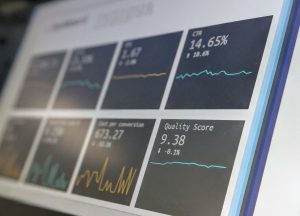Talking SEO Return on Investment with Your Clients
Being a SEO (search engine optimization) expert, you understand the hard work and dedication that goes into quality work. However, the clients you work for usually do not understand exactly how tricky and how much work goes into SEO. A lot of this reason is due to your client not seeing an actual return of investment (ROI) from your SEO work.
Clients will spend their money on projects that show continuous, obvious ROI statistics. Because of this, SEO work is commonly dismissed. For this reason, it is crucial for you to track the ROI of your SEO work. Tracking ROI proves to be a bit confusing at first, but it is well worth the time and energy to learn.
Something to remember when tracking ROI is the three measurements:
- Measurement of Revenue
- Measurement of Leads
- Measurement of Revenue Per Leads
The measurement of revenue per lead is calculated by dividing total amount of revenue by total amount of leads.
Using Goals and Events in Google Analytics to Your Advantage
When tracking leads, you have to remember that page visits are not always leads. They can turn out to be leads, but they do not have to be. The most important data that needs to be tracked back to revenue are goals and events.
If you have a good understand of Google Analytics, you can use that knowledge to your advantage. People who are not trained in Google Analytics (most commonly the CEO in which you work for), will most likely be confused when it comes to tracking goals and events. Use this prime opportunity to your advantage by teaching your clients about what they are, how they work, and why they are important to their business. Commonly used definitions of goals and events are:
- Goals – Staying to the true definition of the word, a goal is a desired occurrence you want to achieve. There are approximately three main goals that you will want to keep track of. You will first want to measure the amount of visits a particular URL receives. Next, measure the amount of time they spend on the site. Lastly, take note on the number of pages viewed by each individual that spends time on the site.
- Events– Events are specific actions performed by individuals while on the website. These actions are things like using download function buttons, or clicking on links. Each event shows proof of an actual interaction with the webpage, rather than just an individual visiting the page.
- It is imperative that you learn how to keep track of ROI. ROI does not just include revenue per leads, events, or goals. You must measure and keep track of things such as removal Google penalties. Some functions cannot even be linked to revenue. Ensure that you cover all of your bases.
- SEO takes time. Be honest with your client from the get go. You need to inform them that SEO is a long-term position. Even when search result positions begin to improve and increase, the ROI may still be difficult to see. For this reason, it is highly important you keep a constant watch on the data, and have it ready to discuss with your clients at their disposal.
- Always educate your clients when you have the opportunity. Teaching your clients will earn you their trust. This trust builds the foundation for a prosperous, long-term relationship.
Read more on page 2 about talking return on investment with SEO.




